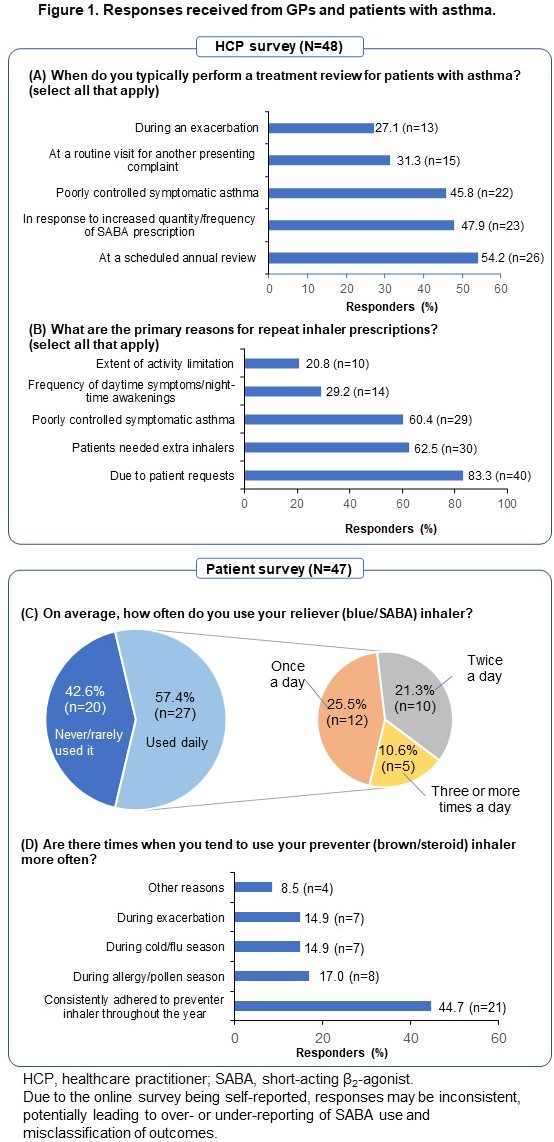Abstract
Background: High short-acting ?2-agonist (SABA) use and/or inhaled corticosteroid (ICS) underuse remains common and is associated with poor asthma outcomes.
Aim: This study explored patients? and healthcare practitioners? (HCPs) perspectives to contextualise asthma treatment patterns observed in real-world studies.
Methods: Data were collected using online surveys from HCPs and people with asthma (?18 years old with a confirmed asthma diagnosis of any severity) who had consented to research participation through the Clinical Practice Research Datalink. Total valid responders were determined after eliminating disqualified responses. Data were analysed using descriptive statistics.
Results: Of 48 valid HCP responders, 54% (n=26) reported scheduling an annual asthma treatment review with their patients (Fig 1A-B). Of 47 valid patient responders, 57% (n=27) reported using their reliever inhaler daily (Fig 1C). Overall, 55% (n=26) of patients reported being prescribed a preventer inhaler, although 32% (n=15) never used it. Consistent annual adherence to preventer inhalers was reported by 45% (n=21) of all patients, whilst other patients used it intermittently (Fig 1D).
Conclusions: SABA and ICS prescription patterns are driven by a combination of HCP and patient factors. Opportunities exist to improve asthma control and behaviours around inhaler usage.
